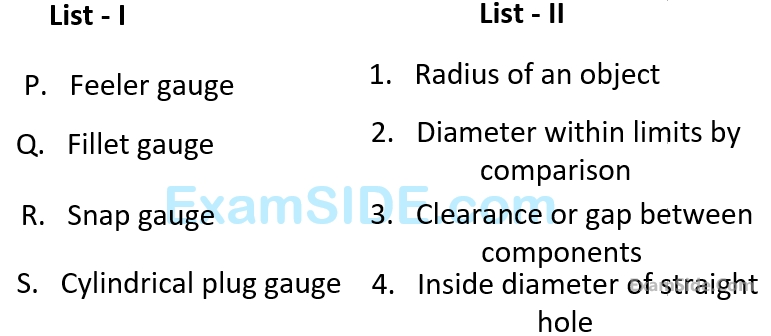A shaft of diameter $25^{-0.04}_{-0.07}$ mm is assembled in a hole of diameter $25^{+0.02}_{-0.00}$ mm. Match the allowance and limit parameter in Column I with its corresponding quantitative value in Column II for this shaft-hole assembly.
|
Allowance and limit parameter (Column I) |
Quantitative value (Column II) |
||
|
P. |
Allowance |
1. |
0.09 mm |
|
Q. |
Maximum clearance |
2. |
24.96 mm |
|
R. |
Maximum material limit for hole |
3. |
0.04 mm |
|
|
|
4. |
25.0 mm |
Electrochemical machining operations are performed with tungsten as the tool, and copper and aluminum as two different workpiece materials. Properties of copper and aluminum are given in the table below.
$$ \begin{array}{|c|c|c|c|} \hline \text { Material } & \begin{array}{l} \text { Atomic mass } \\ \text { (amu) } \end{array} & \text { Valency } & \text { Density }\left(\mathrm{g} / \mathrm{cm}^3\right) \\ \hline \text { Copper } & 63 & 2 & 9 \\ \hline \text { Aluminum } & 27 & 3 & 2.7 \\ \hline \end{array} $$Ignore overpotentials, and assume that current efficiency is 100% for both the
workpiece materials. Under identical conditions, if the material removal rate (MRR) of copper is 100 mg/s, the MRR of aluminum will be ________________ mg/s (round-off to two decimal places).
